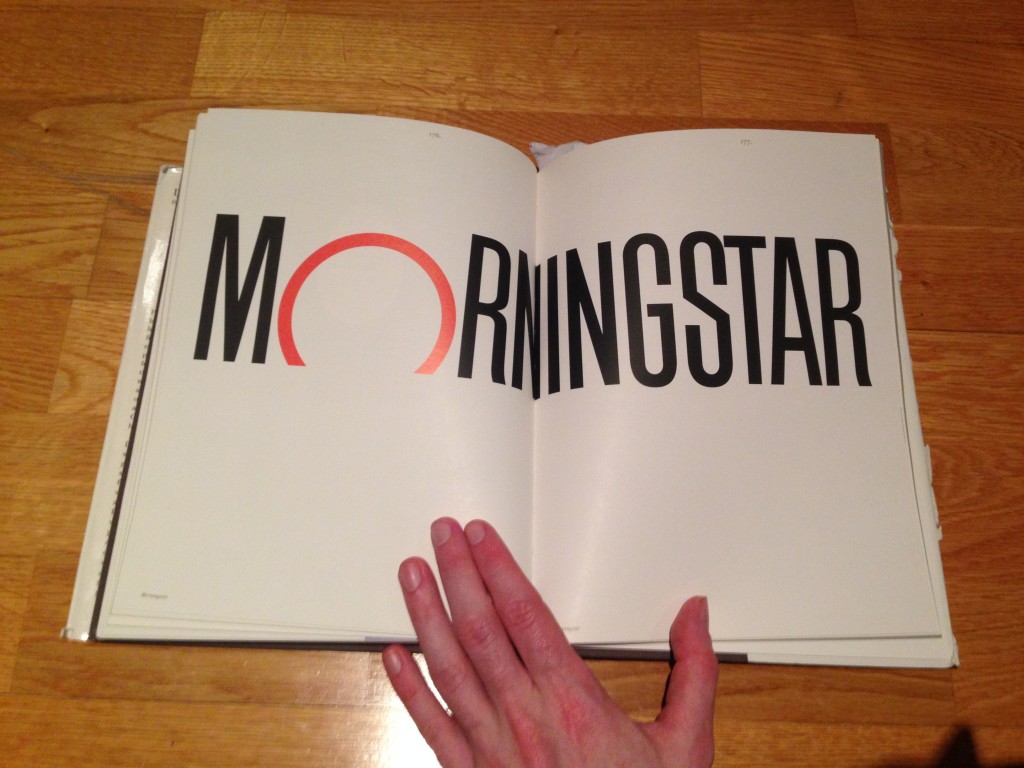I’ve recently purchased myself a second-hand copy of Paul Rands book ‘Design Form and Chaos‘. It took almost a year to get my hands on a copy as this book seems to have become the holy grail of design books, with copies sold on Amazon for over £200!
My copy still wasn’t cheap, yet I managed to find a reasonably priced copy thanks to eBay for £60, imported from Australia. It wasn’t in perfect condition, with some ruffled edges on the cover, but I wanted it regardless. The book had a hefty price tag, but I can assure you it was worth it.
The most valuable section of the book is titled ‘Some thoughts and some despair about the design of a logo’ where every other line was a valuable wealth of knowledge, and some of the best advice I have ever read on the subject.
There’re so many words of wisdom, but here’s a few I have randomly pulled out as examples:
A logo is an instrument of pride and should be shown at its best. If in the business of communications, “image is king,” the essence of this image, the logo, is the jewel in its crown.
Here is what a logo is and does:
A logo is a flag, a signature, and escutcheon, a street sign.
A logo does not sell (directly), it identifies.
A logo is rarely a description of a business.
A logo derives its meaning from the quality of the thing is symbolises, not the other way around.
A logo is less important than the product it signifies; what it represents is more important than what it looks like.
The subject matter of a logo can be almost anything.
The principle role of a logo is to identify, and simplicity is its means. A design that is complex, fussy, or obscure harbors a self-destructive mechanism. No amount of literal illustration will do what most people imagine it will do. This will only make identification more difficult and the “message” more obscure. A logo, primarily, says who, not what, and that is its function
Discovering what lies behind a £100,000 Logo Design
I’m a big fan of Apple and Steve Jobs, and after reading his biography a few years back I was curious to know more about the logo design created for the business Steve founded during his absence from Apple called ‘Next’. Thankfully this book includes an amazing section with replicas of brochures Rand created for the presentation stage of his design process, one of which is Next, along with The Limited, IBM, AdStar, IDEO and Morningstar.
The logo for ‘Next’ was designed at the time by Paul Rand, and cost a whopping £100,000. I was curious… what does one get when they spend £100,000 for a single logo design? Luckily for me, the book runs through the thought process within the presentation booklet, which is exactly the reason why I was prepared to put down a small fortune to find out.
The fascinating insight into Paul Rands work is how he approaches each design, which I can only describe as a study of the word, giving a real focus on readability. By experimenting and reviewing each change he is able to highlight problematic areas and gradually improve with each iteration.
With these brochures, Paul Rand was able to present the logo design evolution and thought process step by step to the client. Although only one ‘final’ logo is presented it’s difficult to argue or disagree decisions when you can see the progress in this way. It’s both educational and inspiring, and something I certainly plan to add into my logo design process in the near future.
A look inside the design book
Below I have included a few photos from inside this amazing book. I took them using my phone so apologies for the quality!
When I remove the cover there is a really great autograph from Paul Rand. I imagine it’s printed, but it looks so much like a pencil line I do wonder and hope its real… if anyone also has a copy I’d love to know for sure. Either way, it’s a treasure!
Paul Rand was always an idol of mine, but after reading this book I truly understand why he is such a powerful figure in the design world. I have definitely learned some valuable lessons and will be evolving my logo design process accordingly to give my customers a better service.
Have you read this book? What did you think? Is it worth the £200 Amazon price tag? Find me on twitter @Logo_Geek – lets chat!








